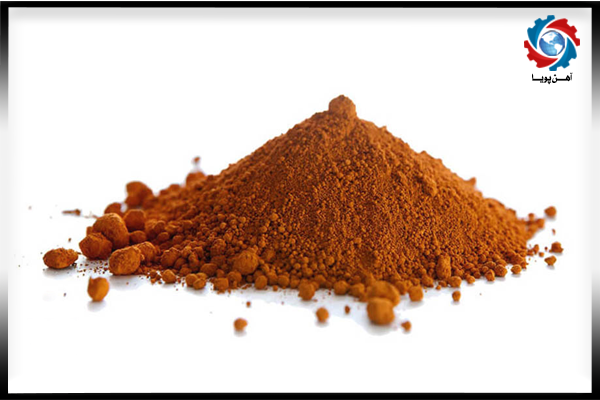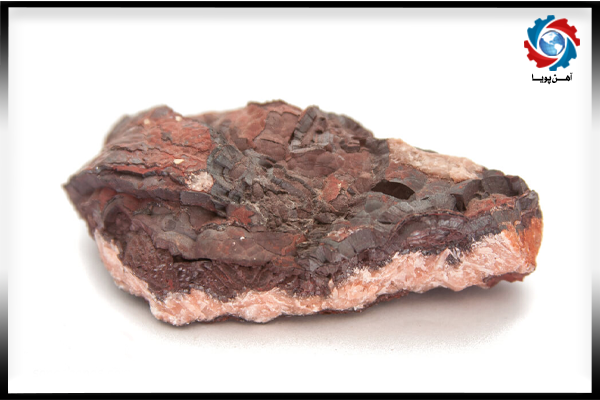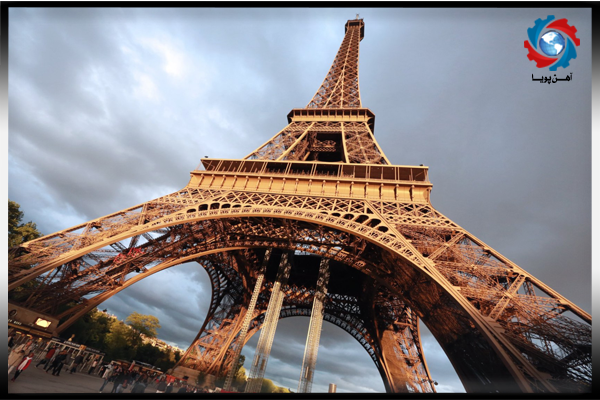
Iron oxide is a chemical compound with the formula of FeO made of iron and oxygen . There are 16 types of iron oxide and iron hydroxide . This oxide plays an important role in most geological and biological processes , and is widely used as iron ore , pigment and catalyst in thermite . Iron oxide is used in many cases such as cosmetics , ceramic and tile products , colorful mosaics and … .
Iron oxide , commonly known as iron rust , is one cause of many cases of decay in wet weather conditions but also has many industrial applications . The two components in oxides , oxygen and iron are naturally present in the earth and are vital to humans and are used for most geological and biological activities .
The interaction and conversion of these components from one form into another form essentially controlled by bacteria . They contain 70 and 72 % of iron , respectively . In addition , iron ore has somewhat of iron oxide .
Iron oxides are cheap and durable pigments in paints , coatings and colored concretes . Colors that are usually available are in yellow , orange , red , brown , and black . These compounds are used as food dyes in the food industry .
As mentioned , iron oxide is used in various industries . For example , this product is used in cosmetic industries as a mineral compound . Iron oxide is used in producing a range of cosmetics and skin care products , and many of these products have iron oxide compounds .
● Since early 1900 , iron oxide has been used in cosmetics dyes ; today iron oxide is divided into three major categories , including :
- Yellow iron oxide
- Red iron oxide
- Black iron oxide

Iron oxide is a non – toxic and resistant magnet to weather and sun conditions . These substances are divided into two natural and artificial categories .
Natural : These materials are composed of a combination of one or more ferrous or ferric oxide , and some impurities such as manganese , clay or organic materials .
- Red pigment is achieved from hematite .
- The yellow and brown pigments are derived from limonite .
Artificial : These materials can also be produces in a variety of ways . These methods can be attributed to thermal degradation of iron salts such as iron sulfate , for the production of red pigment . Yellow , red , brown and black pigments can also produce through Penniman – Zoph method . Moreover , yellow and black pigments can also be produced by reduction of organic compounds .
In the artificial synthesis of these substances , pigments are produced in controlled conditions . As the size and distribution of components are all adjustable , thus in artificial pigments , quality and purity of pigments is much higher than natural pigments .
hematite is one of the types of iron oxide used in the laboratory in black color . Since hematite is used by iron oxide to extract iron from mines , it should be noted that hematite is variable , and you can find it from bright gray to red color . Each of the colors of hematite is used in certain industries , for example red iron oxide hematite is used as a liquid color .
If we want to look at the appearance of this iron oxide , it has to be said that hematite is astonishingly beautiful and glossy , and if you don't cut this rock , it will be opaque and by polishing , it will be so brilliant and beautiful . Hematite rock is so beautiful that many people are confused determining this rock with precious stones , but it has to be noted that hat this stone has nothing to do with precious stones .
Hematite is made of more than 70 % of iron and 30 % oxygen and the use of this rock in industries has caused it to name as the most important iron ore in the world . Three countries of China and Brazil are the largest producers of hematite in the world .

The major application of pigments is in the production of paints , coatings and construction materials such as concrete , mortar , tile and … .
Normally , the natural pigments are used in cases where color stability is less important , as a result these materials are generally used in lower layers as a primary material . Whereas , artificial types are used in top coating layers where , the stability and quality of pigments has more importance .
The sediments of these pigments can be seen in countries such as France , Iran , Italy , Cyprus, and Spain . Countries like India, Spain and Honduras have shown great activity in the production of these materials in recent years . Pigments of iron oxide are used as paint for ceramic glaze , glass , paper , plastic and in cosmetics and etc. Additionally , micro iron oxide coatings are used for tougher conditions , including industrial reservoirs , refineries , chemical plants , drilling rigs , bridges and even in Eiffel Tower .

The importance and applications of iron oxide have led to an increase in production and sales , which caused different industries to use iron oxide for their processes . There are currently several types of iron oxide in the world , which have unique properties and applications .
The existence of this widespread diversity has led to the iron oxide use in different industries such as :
- Painting
- Tile products
- Polymer plastic
- Cosmetics and skin care products
- Medicine
- Biology
Iron oxide sales are carried out in large volumes today , as the component is used as one of the most important compounds in these companies .
Iron metals and some iron oxides have magnetic capability and used widely in the past due to the same functionality . Scientists used iron oxide in audio tapes to store sound recording , which was why metal oxide sales were very high because it was used in various industries . Today, however , we see the use of magnetic recording in computer science that has caused iron oxide to continue to have its magnetic applications .
Iron oxide is very vital to humans today and is also used in most biological geological activities .
In addition to the above mentioned items , this compound is used as a pigment , catalyst in industries and hemoglobin in blood circulation .
The total world production of iron oxide ( natural : 13 % and artificial ; 87 % ) was approximately 1.4 milion tons in 2006. China was a major producer of the world by producing 49 % of the world's total production in 2006 . In 2007 , the total production of United States of America was calculated about 50.000 tons and valued about 50 million dollars .
Generally , oxidation of iron , either naturally or artificially , has made various combinations and are used in various processes such as steel production , iron , dyes , medicines , cosmetic industries , etc .
There are generally three different types of materials that are naturally occurring .
● Iron ( || ) Oxide
● Iron ( ||| ) Oxide
● Iron ( || ) Oxide ( || )
The difference in these materials depends on the concentrations of iron and oxygen present in the compound .

Ahan Pouya with more than a decade of best-selling experience, adheres to professional and ethical principles in the field of selling and buying at inside and outside the borders of Iran, helping you in the steel industry.